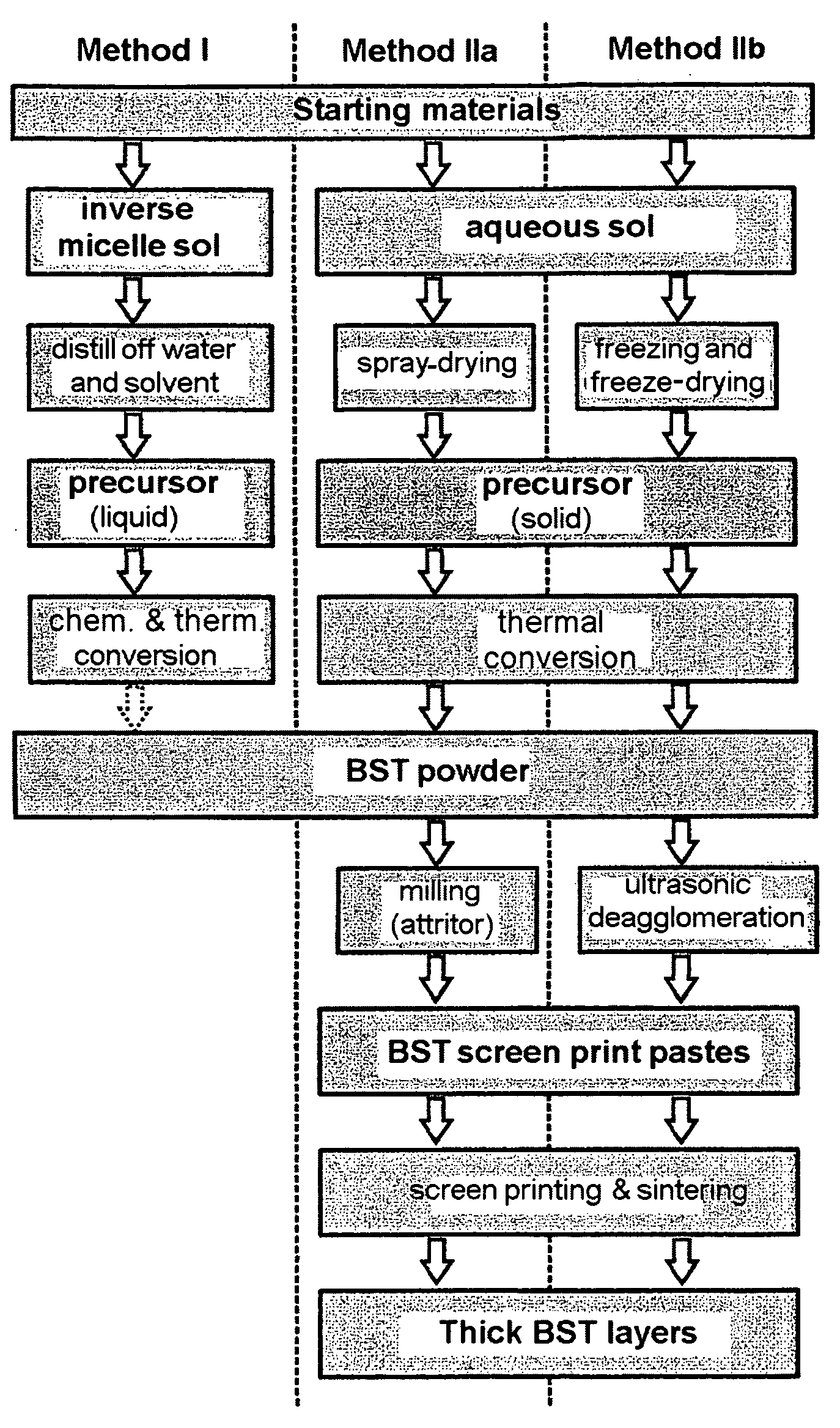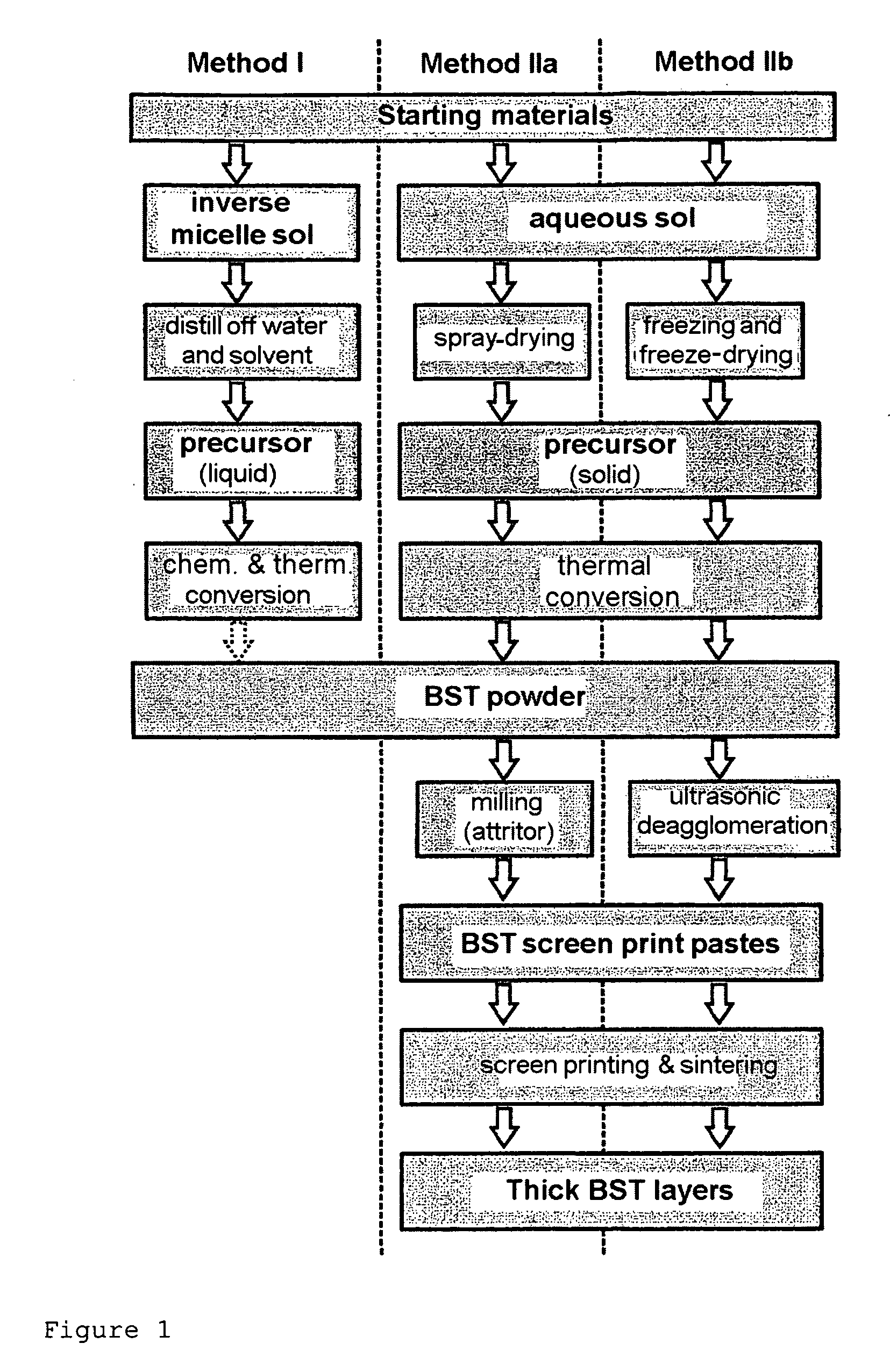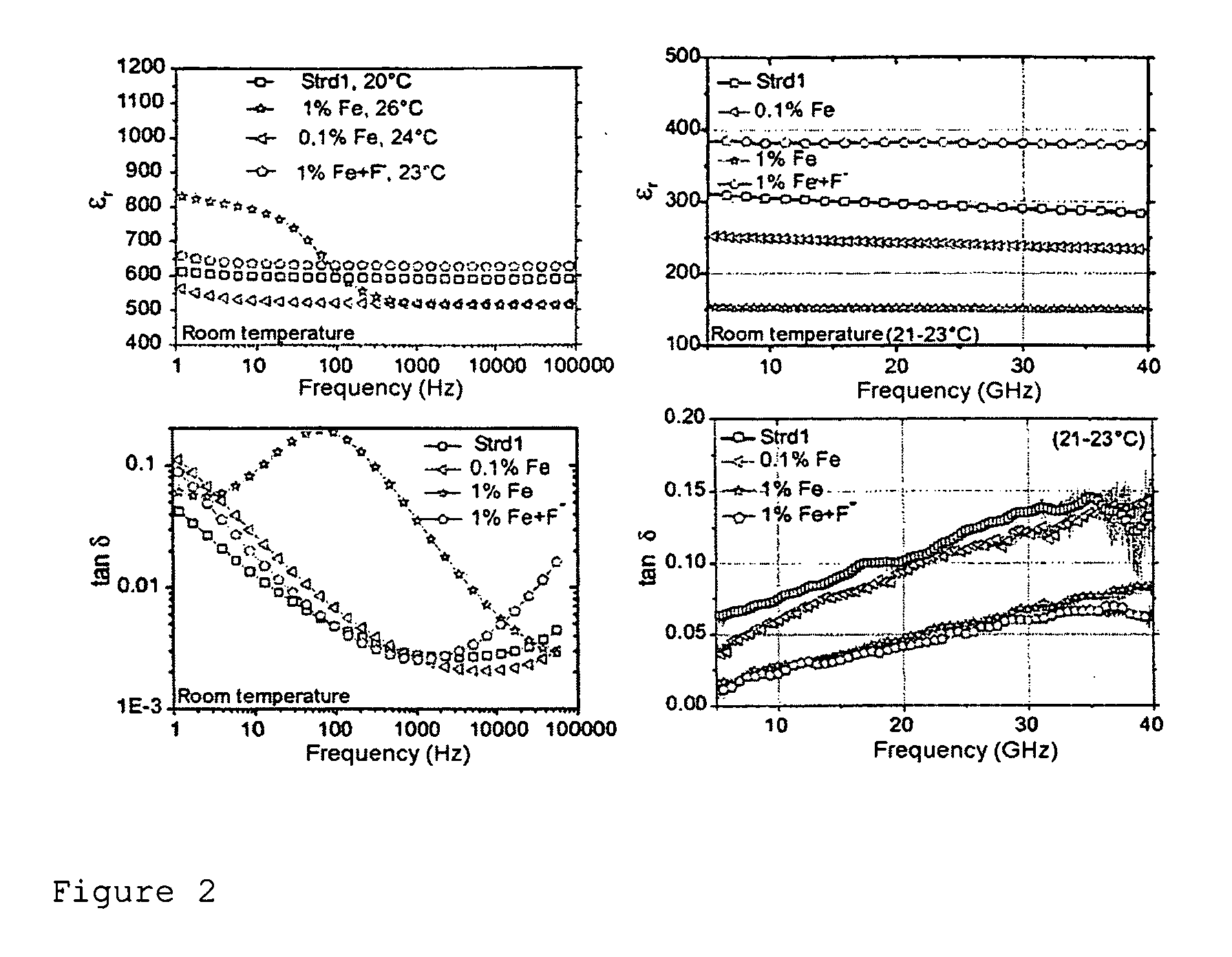Ceramic dielectric or thin and/or thick layers containing at least one ceramic dielectric method for production and use thereof
a ceramic dielectric and dielectric technology, applied in the direction of fixed capacitors, alkaline earth titanates, metallic material coating processes, etc., can solve the problems of electronic circuits no longer managing, many technologies not technically feasible, and phase shifters based on coils having ferrite cores and pin diodes not being established
- Summary
- Abstract
- Description
- Claims
- Application Information
AI Technical Summary
Benefits of technology
Problems solved by technology
Method used
Image
Examples
example a
[0194]The synthesis of a sol which corresponded to the amount of 20 g of BST by means of the inverse micelle route was effected as follows:
[0195]7.725 g (56.25 mmol) of barium metal and 3.286 g (37.50 mmol) of strontium metal in approximately pea-sized pieces were added to a solution of 26.64 g of Ti isopropylate (99.75 mmol) in 500 ml (536.70 g, 2.95 mol) of dried diphenyl ether in a nitrogen-flushed, thermostatable glass reactor. The initially white-colored, colloidal solution was thermostated at 70° C., and 6× the stoichiometric amount (67.61 g, 1.125 mol) of dried isopropyl alcohol were added in the course of 7 days. After 7 days, the metals had dissolved. Approximately 3× the molar amount of the alcoholates (3×93.75 mmol) of oleic acid (cis-9-octadecenoic acid, 79.36 g) was added dropwise to the now honey-colored, colloidal solution. The excess isopropanol was then distilled off at 100° C. and atmospheric pressure. Thereafter, 95.74 g (2.82 mol) of a 30% strength H2O2 (“Perhydr...
example b
[0196]The production of a sol via the sol-gel route corresponding to the mass of 20 g of BST powder was carried out as follows: 26.648 g of titanium(IV) isopropanolate (93.75 mmol) were added dropwise to a solution of 14.368 g of barium acetate (56.25 mmol) and 8.052 g of strontium acetate (37.50 mmol) in 240.2 g of glacial acetic acid (4 mol) at room temperature in the glass reactor flushed with N2. An exothermic reaction followed, and a slightly viscous, colorless and clear sol formed. 432.4 g of water (Millipore, filtered) were then added rapidly. A likewise colorless and clear sol having a similar viscosity to water formed. This sol obtained in this manner was suitable for further processing both by spray-drying and by freeze-drying.
example c
[0197]For the production of doped BST, the dopants (Fe, Ta) were added either as hydrolysis-sensitive alcoholates or as water-soluble nitrates. The water-sensitive alcoholate of the Ta dopant was added together with the Ti isopropylate at the beginning of the synthesis via volumetric metering of a stock solution of Ta ethoxide in isopropanol (9.015 mg of Ta ethoxide per ml of solution). The water-soluble nitrates were added as an aqueous solution before the dilution with water. The dopants chosen were Fe3+ as an acceptor, Ta5+ as a donor and Fe3+ together with F− as a mixed acceptor-donor dopant. Iron and tantalum were introduced in two different concentrations as nitrates, and F− was introduced as trifluoroacetic acid (TFA). The addition of water was necessary in order to permit further processing by freeze-drying.
PUM
| Property | Measurement | Unit |
|---|---|---|
| Particle size | aaaaa | aaaaa |
| Frequency | aaaaa | aaaaa |
| Frequency | aaaaa | aaaaa |
Abstract
Description
Claims
Application Information
 Login to View More
Login to View More - R&D
- Intellectual Property
- Life Sciences
- Materials
- Tech Scout
- Unparalleled Data Quality
- Higher Quality Content
- 60% Fewer Hallucinations
Browse by: Latest US Patents, China's latest patents, Technical Efficacy Thesaurus, Application Domain, Technology Topic, Popular Technical Reports.
© 2025 PatSnap. All rights reserved.Legal|Privacy policy|Modern Slavery Act Transparency Statement|Sitemap|About US| Contact US: help@patsnap.com



